SOMETHING OLD, SOMETHING NEW: RABINDRANATH TAGORE 150TH ANNIVERSARY VOLUME | EDITED BY PRATAPADITYA PAL
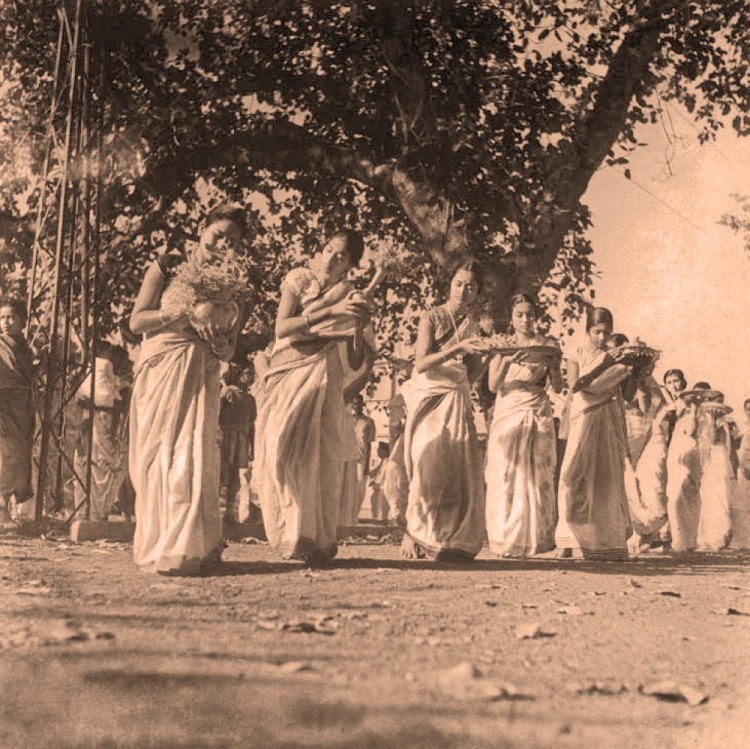
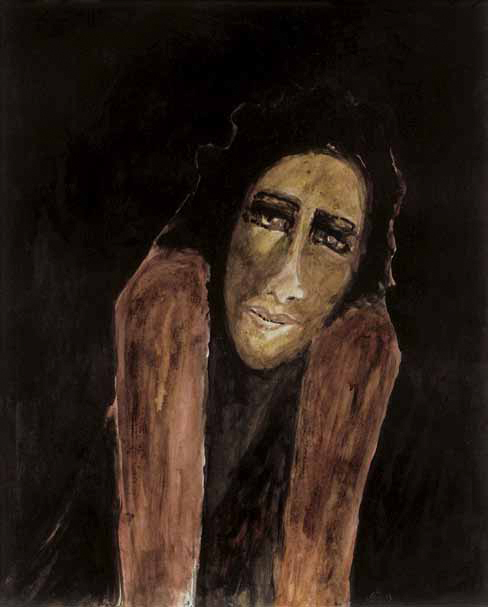
Something Old, Something New: Rabindranath Tagore 150th Anniversary Volume
edited by Pratapaditya Pal
Text by Vittoria Biasi – All Texts are 1F mediaproject copyright. All Rights Reserved.
During 1961 celebrating the centennial of Rabindranath Tagore’s birthday (1861-1941)- Nobel prizewinning for the literature – Mr. Mulk Raj Anand, Marg publisher, dedicated a whole issue of the magazine to the artist. On the occasion of the 150th Anniversary of Rabindranath Tagore’s birthday, the National Gallery of Modern Art at New Delhi – which is looking after his works – celebrates the eclectic intellectual by publishing Something old, Something new (Pratapaditya edition) dedicated to his artistic works.
Rabindranath Tagore is the father of the Indian Modern Art; he was a friend of Gandhi, with whom shared political ideas which are the origin of India modern Nation. He has been the supporter of the Hindu linguistic identity, of the Mughal Indian art revival. Pratapaditya publishing house, edited by Mr. Pal Pratapaditya from 1981 to 1995, curator of Indian and South-East Asian art at the Los Angeles County Museum of Art, does an important ascertainment around the period which has been of a key role for India’s future, recomposing the artistic history of R.T. through the writings of the intellectuals who were interested in his artistic works. It is of relevant importance to point out that Tagore’s language about art and poetry is aimed at understanding the signals, both peculiar and common of religious harmony and devotion. Tagore is a character of meaningful importance into the Indian post-colonial culture, admired for the thinking and for the poetry all over the western world.
The Marg, magazine born in 1946, one year prior the independence of India, has been following, collecting and filing the debates, the meetings, the reviews, the intellectual events that have escorted the conquest of the national identity from where it has been possible to reconstruct one’s own past history for the future. The magazine directed by the Professor and philosopher Mr. Mulk Raj Anand begun a work of identification, classification and spread of the national heritage in the field of the visual and performative arts. The organization is supported by the industry JRD Tata, from 1951 to 1986 as a division of this group. Afterwards it becomes a division of the National Centre for the Performing arts, and Marg Foundation during 2010.
Something old, something new is a volume collecting some important contributions on the Indian intellectual, among the others the Professor Mr. P. Pal’s foreword, expert in the arts and cultures of the subcontinent, Himalayas and Asiatic South-East; the essay of Mulk Raj Anand, admirer of Rabindranath Tagore’s art, and other writings taken from the archives of MARG’s. Santidev Ghosh tells us of Tagore’s interest and engagement to defend and preserve the Manipuri dance into its old expression, coherent and respectful of the cultural identity concept. It is also important what is written in Gerald James Larson’s paper about the friendship that bound Tagore to Gandhi. Mr Pratapaditya Pal reconstructs the wonderful convergence of a historical period, the beautiful intertwining of lives and the cultural features of particular places in India.
Vittoria Biasi
Translated by Salvatore Rollo – at salvatore_rollo@fastwebnet.it
..)(..
Testo di Vittoria Biasi
Nel 1961, per il centenario della nascita di Rabindranath Tagore (1861-1941), premio Nobel per la letteratura, Mulk Raj Anand, editore della rivista Marg, gli aveva consacrato un numero della rivista. Per il 150° anniversario della nascita di, la galleria Nazionale d’arte moderna di New Delhi, che conserva opere di Rabindranath Tagore, celebra la figura dell’eclettico intellettuale con la pubblicazione di Something old, something new (edizione Pratapaditya), dedicato alla sua attività culturale.
Rabindranath Tagore è il padre dell’arte moderna indiana, è stato amico di Gandhi, con cui ha condiviso un pensiero politico, che è all’origine dell’India moderna; è stato il sostenitore dell’identità linguistica indù, della rinascita dell’arte indiana rappresentata dall’arte Mughal. La casa editrice Pratapaditya, diretta dal 1981 al 1995 dal Professore Pal Pratapaditya, curatore dell’arte indiana e del sudest asiatico presso il Los Angeles County Museum of Art, compie un’importante ricognizione sul periodo che ha determinato il futuro dell’India, ricomponendo la storia del percorso artistico di Rabindranath Tagore attoverso gli scritti degli intellettuali che si sono interessati alla sua arte. E’ da rilevare che il linguaggio di Tagore nell’arte e nella poesia è rivolto a cogliere i segni essenziali, comuni, di religiosa armonia e devozione. Tagore è una figura di centrale importanza nella cultura post-coloniale indiana, ammirato nel mondo occidentale per il pensiero, per la poesia.
La rivista Marg, sorta nel 1946, un anno prima dell’indipendenza, ha seguito, raccolto, archiviato i dibattiti, gli incontri, le recensioni artistiche, gli eventi di intellettuali che hanno guidato la conquista dell’identità da cui ricostruire la propria storia del passato per il futuro. La rivista, sotto la direzione del Professore, filosofo Mulk Raj Anand, aveva iniziato un lavoro di identificazione, catalogazione e divulgazione del patrimonio nazionale nel campo delle arti, visive e performative. L’organizzazione è sostenuta dall’industria JRD Tata, di cui diviene dal 1951 fino al 1986. Dopo quella data Marg fa parte del Centro Nazionale per lo Spettacolo (NCPA): nel settembre 2010 si trasforma in Marg Foundation Marg profile .
Il libro Something old, something new raccoglie alcuni contributi importanti sull’intellettuale indiano, tra cui l’introduzione del Professore Pratapaditya Pal, un’autorità nel campo delle arti e le culture del subcontinente, Himalaya e Sud-Est asiatico; il saggio di Mulk Raj Anand, estimatore dell’arte di Rabindranath Tagore, e scritti tratti dagli archivi della rivista Marg. Santidev Ghosh, nel saggio Tagore and Manipuri Dances, racconta l’interesse e l’impegno di Tagore per difendere, preservare la danza Manipuri nella sua antica espressione, in coerenza e ossequio al concetto di identità culturale. E’ altrettanto importante lo scritto di Gerald James Larson sull’amicizia che lega Tagore a Gandhi. Pratapaditya Pal ricostruisce la meravigliosa convergenza di un periodo storico, l’intreccio meraviglioso di vite e i tratti culturali di luoghi particolari dell’India.
Vittoria Biasi
..)(..
Tagore Pages 010-024 (INTRODUCTION)
Pratapaditya Pal
I dive down into the depth of the ocean of forms
Hoping to gain the perfect pearl of the formless.
– Gitanjali
Half a century ago, in the birth centennial year of Rabindranath Tagore (1861–1941), an issue of Marg was devoted to the poet’s paintings as a tribute.1 The issue contained a single essay by Marg’s then editor, Mulk Raj Anand (1905–2004).
It was the first major assessment of the poet’s artistic endeavour – rather a late development in his life – by a major figure in the post-Independence cultural scene.
Since the essay published in the magazine is not easily accessible today, we thought it would be appropriate to include it in this book for new generations of readers.
Some readers of this volume may not be aware that there has been a significant shift in the market since 1961 in the appreciation of Tagore’s paintings. True, in 1939 he had arranged an exhibition in a commercial gallery in London to sell his pictures, ostensibly to raise funds for his dear university at Santiniketan for which he sacrificed all his personal wealth during the second half of his life. We do not know how many paintings sold then and how much money was raised.
We do know that he gave seventeen unsold pictures as a gift to the Dartington Trust in England which was founded by his friend Leonard Elmhirst (1893–1974) and his American wife Dorothy Straight. These pictures appeared in London at a Sotheby’s auction in June 2010 and sold robustly for prices that Tagore could not have dreamt of.2 Would he have been pleased at this long delayed pecuniary recognition of his pictures, seven decades after that London exhibition, rather than his verbal creative efforts, his first love?3
We offer our readers in a new millennium two more pieces related to Tagore published in previous issues of Marg. One, entitled “Tagore and Manipuri Dances”, is by Santidev Ghosh (1910–99), a singer and dancer intimately associated with Tagore and his Sangeet Bhavana and a major exponent of both forms of art at the university.4 As Ghosh noted, Tagore not only was the first to recognize the beauty of the Manipuri dance form but also was the pioneer in the “revival of dancing among the urban intelligentsia” of the country. The remarkable story of Tagore’s role in the revival of classical Indian dance is reassessed in a broader context and brought up to date in a new discourse by the well-known dance critic and scholar Sunil Kothari later in this volume.
The third essay, from the Marg archives of 1994, is on the houses of Rabindranath, contributed by Andrew Robinson who, with his Bengali wife, Krishna Dutta, has recently written a well acclaimed biography of the poet, the first to appear in English since Krishna Kripalani’s briefer work was published in 1962.5 Among the many quirks or idiosyncrasies of Tagore, prominent was his restlessness. Frequently in his life he would complain about being cooped up in
one place and express his desire to get away, and then again long to return home to his “golden Bengal” no sooner had he reached the distant shore. This playful restlessness led him to build several houses even in Santiniketan in different styles and materials which is the subject of Robinson’s fascinating article where he observes how, like the German poet Goethe, Tagore too longed for “more light and more space”. However, as the author concludes, the great aesthete who was able in one lifetime to transform India’s literature, music, dance, the visual arts, and other areas of artistic endeavour, was less successful in architecture.6
One of Tagore’s favourite times of day was the early morning when he would sit near a window or on a veranda on the east to allow the soft light of the rising sun, his mate in the sky, as he said, to caress him. And light is a frequent theme in his songs, as, for instance, in that passionate and spirited example, where the music and lyrics meld seamlessly as he declares:
Ālo āmār ālo oga ālo bhuvanbharā
Ālo nayandhoyā āmār, Ālo hriday harā!
Nāche ālo nāche, bhāi, āmār prāner kāchhe….
Light, my light, the world-filling light,
the eye-kissing light,
heart-sweetening light!
Ah, the light dances, my darling, at the centre of my life….
– Gitanjali
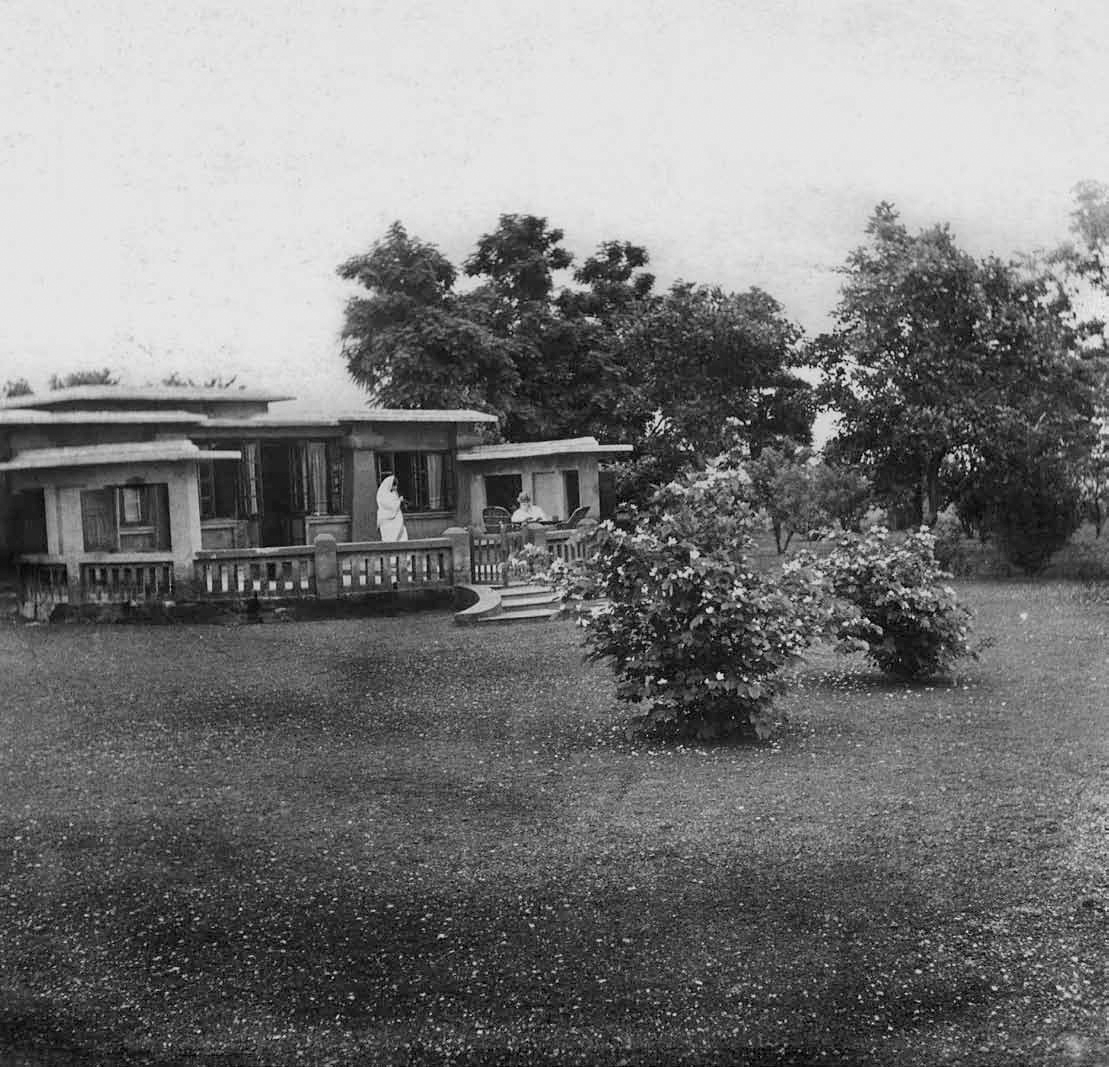
It was the restlessness in his nature and his constant desire for new forms and challenges that contributed to the diversity of Rabindranath’s myriad creative activities. Time and again he writes, “I am restless / I am athirst for the distant,” or again, he laments, “I have a house in every place but constantly search for my home. / Every land is my homeland / I will fight for that land, if necessary.”7 Although he has been frequently compared to Shakespeare or Goethe as a poet, I think he had more in common with Leonardo da Vinci. Not only was his curiosity about science and technology insatiable, his keen interest in it as a means to ameliorate poverty led to the creation of the industrial complex at Sriniketan. It would not be an exaggeration to say that never in the history of India has there appeared a more versatile genius.
* * *
The new essays in this volume cover a wide range of subjects with new voices that offer fresh insights into the personality of this “myriad-minded” man who was a colossus in the cultural and spiritual life of the unfragmented subcontinent.8
The other 20th-century giant was of course Mahatma Gandhi who was given the sobriquet of “mahatma” or “great soul” by none other than Tagore. Gandhi returned the compliment by satirically characterizing Rabindranath as “The Great Sentinel”, though personally he always addressed the poet as “gurudev” or “divine mentor”. Both mahatma and gurudev stuck, and each lived up to the epithets in their own individual way. While I do not know whether Gandhi strongly denied the import of the expression mahatma, Rabindranath certainly objected to his, verbally on several occasions, denying that he was anyone’s guru. However, in his demeanour or dress, as well as behaviour, he did little to live down the honorific, especially with his distinctive and aristocratic appearance dominated by his silver hair and long flowing beard. After he became world-famous as the first Asian Nobel Laureate (1913), he was often compared with Christ in Europe. He certainly looked a commanding and spiritually inspiring figure, like a sage, even a mystic, from the ashrams of Vedic India.9 The boys’ school he founded in Santiniketan was not only inspired by Vedic ashrams but was called the “ashramic school” and the alumni association is still known as the Ashramic Sangha. By contrast, the diminutive and gaunt Gandhi who dressed minimally in a dhoti (with a cotton shawl) identifying himself with the impoverished peasant, gave the appearance of self-abnegation. Personally, he had few possessions and yet, ironically, it is his image alone that stares at you from the currency notes of independent India, a perverse insult to a “mahatma”. In any event, in an incisive, nuanced, and aptly titled essay in this volume, Gerald J. Larson, the emeritus Rabindranath Tagore Professor of Indian Studies at the Bloomington campus of the University of Indiana, offers a provocative discourse on the larger-than-life personalities with contrasting and even contrary views of Indian realities and ideals. Ironically, neither Gandhi nor Tagore would have been pleased with the present situation in India – cultural, intellectual, or spiritual.
Three other non-arts related pieces in the volume are concerned with two very different subjects. Each has received considerable attention in Bengali but not in English and the principal purpose of this book is to reach a wider audience about the poet and his life, work, and message.
It would not be an exaggeration to state that while Rabindranath was a firm believer in the joy of life and living, and marvelled at the wonder of earth, nature, and the universe, at the same time from childhood he was precociously aware of the inevitability of death, unlike most of us. For example, the very first poem that begins his slim book known as Bhanusimher Padabali, the songs of Bhanusimha (his pseudonym), is about death. It begins with the lines, “O death, you are like Shyam (=Krishna) to me / You are dark like the clouds / with clouds as your matted hair / your compassionate lap cools the oppressive heat / death, you are the giver of immortality,” echoing the Upanishadic prayer, “Lead us from death to immortality.”10
If ever proof was needed of the adage that the child is the father of the man, or that the morning shows the day, then this first verse of one of the first poems penned not in Bengali but in the obscure Maithili language of the Vaishnava poets of an earlier age (published in 1877) is ample. He was only sixteen at the time.
He had had his first serious encounter with death a couple of years earlier when Stella Kramrisch Curator of Indian Art at the museum, has written an absorbing article that not only discusses them individually but also places them in the larger context of his oeuvre. Simultaneously, the essay explores Kramrisch’s understanding of Tagore’s visual imagery and visions and her general interest in “modern” art, with the help of her own writings. Kramrisch herself had a wide interest in visual culture including modern European art. Moreover, an accomplished dancer herself, she was an exponent of modern dance. Although she never performed in public, I believe she did dance in private for the poet. In any event, she was a complex and colourful personality and is worthy of a biography herself. Mason’s article is an engaging discourse through Tagore’s art, about the interaction between the Indian poet and the Austrian scholar who was inspired by him to devote her life to India and its culture. She was yet another foreign lady (videshini) who fell under his spell, though she was not a muse. This role was played by Victoria Ocampo, who met the poet in 1924. She was an inspiration to him for the rest of his life for his poetry, and of seminal importance for his avatar as an artist, as discussed by Rajeev Lochan, the director of the National Gallery of Modern Art (NGMA), New Delhi, in this volume.
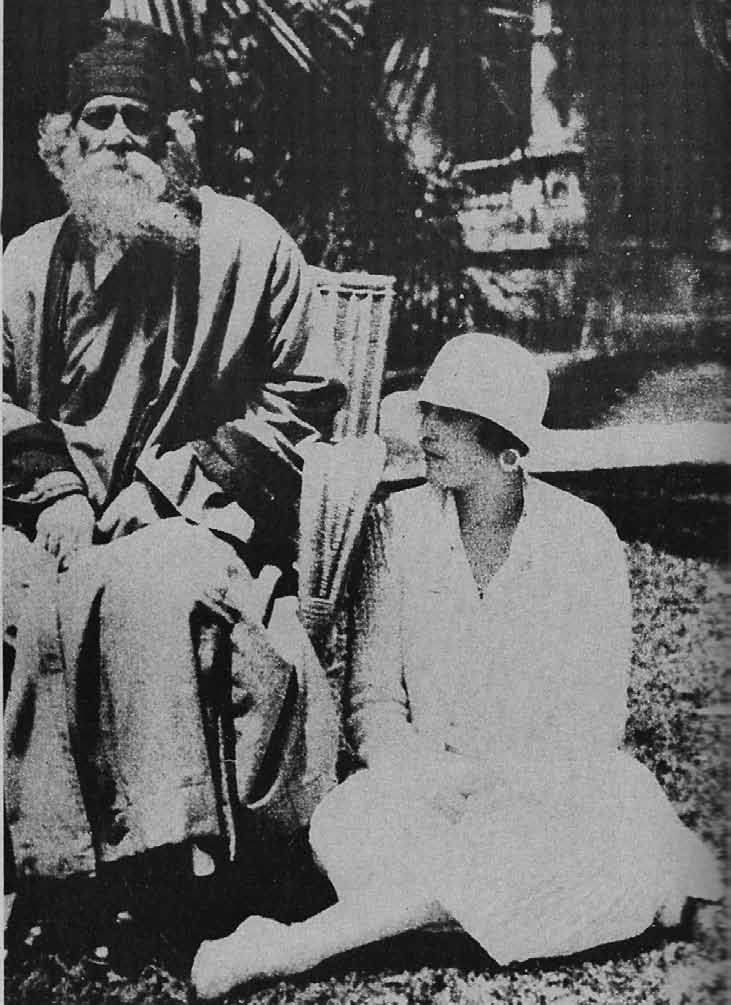
Rabindranath began painting in earnest in his mid-60s, not long after his meeting with Victoria Ocampo in his brief and otherwise uneventful visit to Argentina. She was an attractive, sophisticated, and aristocratic intellectual and writer in her early 30s, and he was a charismatic and sage-like internationally known poet almost twice her age. But Rabindranath was a remarkable man with ability to charm women of all ages – young and old – ever since his teens. Be that as it may, as was the case with his physical restlessness that forced him to move from house to house, from city to the country, and from one country to another, so also with his creative impulse. Painting was another form of self-expression as well as another medium to experience the cosmos and consciousness. As conventional wisdom goes, his painting career began suddenly in old age with doodling on his manuscript, an opinion encouraged by the poet himself.
It would be appropriate here to add some exciting and generally overlooked evidence about the poet’s painting career that has recently been dug up by the late biographer Prasanta Kumar Paul and published in Bengali. He has discovered from an entry in the cashbooks kept in great detail at the Tagore house, that as early as 1875 a certain charge was made to frame a painting made by “Rabibabu”.
Rabibabu was fourteen at the time.14 Paul speculates that the painting had been framed for exhibition at the annual “Hindu Festival” that was initiated a few years prior by the family. If so, Rabindranath may have been taught drawing early in life on his own or with other children, or was encouraged by his elder sibling Jyotirindranath Tagore (1849–1925), who was an accomplished painter and musician, or learnt on his own in imitation of his brother. Whatever the truth, not only does this account-book entry provide a tantalizing clue about his early association with the brush, it was also his debut exhibition at the age of 14, more than half a century before his interest was revived in earnest in the late 1920s.15
Apart from Stella Kramrisch, discussed by Mason, one of the earliest exponents of Tagore’s art was Ananda K. Coomaraswamy (1877–1947) who observed in 1930,
The artist, like a child, invents his own techniques as he goes along, nothing has been allowed to interfere with zest. The means are always adequate to the end in view,…this end is not “Art” with a capital “A”, on the one hand – nor, on the other, a merely pathological self-expression, not art intended to improve our minds, nor to provide for the artist himself an “escape”; but without ulterior motives, truly innocent, like the creation of the universe.16
Since then many eminent critics and artists such as Mulk Raj Anand, already mentioned, Ratan Parimoo, Prithwish Neogy, Andrew Robinson, and others have written about Rabindranath’s visual expressions that absorbed him during the last decade of his life as if he had discovered a new universe.
When in November of 2009 I met Rajeev Lochan, and learnt that the NGMA had a collection of over 100 works of art by the poet, I lost no time in inviting him to contribute an article for our book. He agreed cheerfully and delivered on time a nuanced and insightful essay which updates the discourse in contemporary critical syntax without rhetorical or theoretical obfuscation. It constitutes, together with Anand’s essay retrieved from Marg’s archive and Mason’s new contribution, a formidable trio on the painter Rabindranath that we hope will enhance the value of this book.
What is remarkable about Tagore the painter is that, though starting late in life, he was able to embrace the “modern”, both in art and poetry, long before any of his contemporaries or the younger generation. However, what still remains to be explained is the relation between his verbal and visual expressions and his psyche and inner self. The frequent use of pictorial imagery and visual metaphors in his poetry is also a rich resource for understanding his paintings which hopefully will be explored in greater depth by future scholars, perhaps before his next landmark birthday. As he himself wrote amusingly in 1928 in a letter to the young Bengali poet Sudhindrakumar Dutta:
I write few poems now. The urge to paint is causing trouble to my poetic inclination.
There is a saying that a young new wife captivates an old man. I can’t keep up
with the demands of this young lady. Or, one may say that this is an adulterous
affair with one’s mistress; her attraction is stronger than that of my poetry spouse.
Shrimati Painting has even made my songs a neglected co-wife.17
* * *
The remaining essay in this collection is a reassessment of Tagore’s contribution to another major Indian form of artistic expression: dance. Appropriately, the author is Sunil Kothari, an internationally known authority on the history and theory of Indian classical dance. He brings both erudition and passion to his discussion of Gurudev’s intense involvement in “freeing” both the art of dancing and the forms of dance from the cobwebs of superstition, social apathy, and moral turpitude. By the mid-19th century dance as a form of offering to and entertainment for the gods in temples had been tainted by prostitution and had been transformed from the creative art once patronized by the courts to the prurient “nautch” of the gentry. From Rabindranath’s adolescence the house of the Tagores at Jorasanko, however, was a lively setting for staging dramas, as we learn from Gautam Haldar’s article, when artists such as his uncle Asit Kumar and his colleagues were involved in preparing the stage. Along with music, dance was an integral part of the curriculum in Santiniketan. Later Tagore expanded his horizon and, as with music, encouraged his teachers and dancers to adopt not only the classical modes, such as Kathakali of Kerala or Manipuri (see Santidev Ghosh), but also folk and tribal dances.
The inspiration behind this beautiful publication was the German publisher Kurt Wolff (1887–1963) who was not only one of the visionary European publishers in the early decades of the 20th century but the sole and prolific publisher of Tagore’s books in Germany. In a brief but one of the most perceptive essays on the poet, included in a book about the publisher, Wolff explains the popularity of Tagore in post-WWI Germany as follows:
…in the years just after the war, a contemporary figure suddenly emerged: a poet, a cosmopolitan, a religious man who nonetheless sought no converts, a moral authority who did not moralize. He came bringing poems and verses which offered themselves freely, demanding nothing in return; possessed of a new innocence, they remained outside the sphere of ideology, vessels of human wisdom that introduced a fresh breath of Eastern beauty. As people read they felt in the presence of something magical and beyond reason. Touched by waves of a secret, mysterious force, they could sense that the author of these poems was that oh so rare phenomenon, a case in which creator and creation are one, parts of a single whole.21
In the voluminous literature about Tagore written since the beginning of the 20th century until today, I know of very few passages that so forthrightly and so eloquently capture the essence of the poet’s humanity.
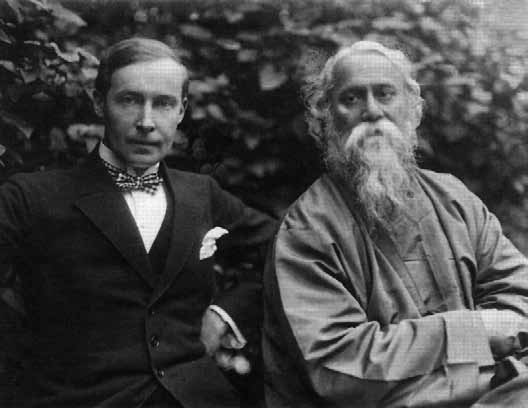
Notes
1 Marg, Vol. 14, No. 2 (March 1961).
2 South Asian Art, including property from the Dartington Trust, Sotheby’s, London, June 15, 2010, lots 20–31. Elmhirst was a close companion and friend of Tagore and ran the poet’s experimental rural centre at Sriniketan. In 1930 he and his wife bought Dartington Hall with its 1,200-acre property and established an institution for the arts and intellectual activities inspired by Tagore’s Santiniketan.
3 Rabindranath always regretted that his countrymen did not appreciate his paintings. It was ironic that the chief minister of West Bengal protested at the sale of the Dartington Hall pictures and wanted them returned to the country, when we are already incapable of taking care of the heritage we have in our museums. The highest price for a picture portraying an unknown woman (see figure 2) seven decades after that London exhibition fetched £ 313,250 (over 2.25 crore) and the total take for the dozen works was over a million and a half pounds.
4 Marg, Vol. 14, No. 4 (September 1961), pp. 48–49. It was interesting for me to learn that Tagore witnessed the first performance of Manipuri dance in the town of Sylhet, now in Bangladesh, where I was born.
5 Andrew Robinson, “A Poet’s Vision: The Houses of Rabindranath Tagore”, Marg, Vol. 46, No. 4 (September 1994), pp. 53– 66; Krishna Dutta and Andrew Robinson, Rabindranath Tagore: The Myriad-minded Man, St Martin’s Press, New York, 1996; Krishna Kripalani, Rabindranath Tagore: A Biography, Grove Press, New York and Oxford University Press, London, 1962. See also Rustom Bharucha’s Another Asia, Oxford University Press, New Delhi, 2006, for a penetrating analysis of Tagore’s relationship with Okakura.
6 It should be noted that Indian architects were rare during Tagore’s lifetime.
7 The lines are taken from two poems included in Utsarga (Dedication) from the popular compilation titled Sanchayita, Visva-Bharati Publishing Department, Calcutta, revised 16th edition, bs 1395 / 1988 ce, pp. 464–65 with Bengali titles Ami Chanchala he (Oh, Restless Am I) and Prabasi (Outsider). Translation mine.
8 The expression “myriad-minded” is evidently the translation of the Sanskrit expression vichitrachitta that was used first in a 7th-century epigraphical panegyric for the Pallava monarch Narasimhavarman I, who with his father Mahendravarman was responsible for the monuments of Mahabalipuram near Chennai. Apparently the expression was also used in the citation of Rabindranath’s Oxford honorary doctorate.
9 To cite only one instance, the poet’s German publisher Kurt Wolff writes: “The Indian celebrity arrived in the Koniginstrasse for lunch, alone, as I had requested. He was dressed in the Indian style; as far as I know he never wore Western clothes. With his long grayish-white beard and great dignity he presented a most impressive figure, so that it seemed a completely natural error when my three-year-old daughter assumed God was paying us a visit, and settled contentedly in the lap of the Lord.” (Kurt Wolff, A Portrait in Essays and Letters, trans. Deborah Lucas Schneider, University of Chicago Press, Chicago, 1991, p. 119.) Many an adult was similarly impressed.
10 The poems in Bhanusimher Padabali were published in 1877 (see Dutta and Robinson, Rabindranath Tagore, p. 64 for amusing anecdotes about these poems). Not only do these remarkable poems demonstrate the precocity of the poet but also his scholarly aptitude, something that is yet to be duly recognized. The English translations are mine. The poem Maran or Death is the first in the compilation Sanchayita, see note 7.
11 Rabindranath’s personality still awaits an in-depth psychological study. In a recent and brief article, the pre-eminent Indian psychoanalyst and scholar Sudhir Kakar offers only a tantalizing appetizer. See Kakar in Anandabazar Patrika, May 8, 2010, Utsa Supplement, p. ka.
12 From the book Kanika: Rabindra Rachanabali (Collected Works), Vol. 3, Visva-Bharati Publishing Department, Calcutta, bs 1393 / 1986 ce, p. 7. Translation mine.
13 Asit Kumar Haldar’s stewardship of Kala Bhavana in its formative stage seems generally to be forgotten. See, for instance, Rhythms of India: The Art of Nandalal Bose (1882–1966), ed. Sonya Rhie Quintanilla, San Diego Museum of Art, San Diego, 2008, where Nandalal is mistakenly mentioned as the first director of Kala Bhavana.
14 Prasanta Kumar Paul, Rabijibani, Vol. 1, Bhurjapatra, Calcutta, bs 1389 / 1982 ce, p. 237). Paul further informs us (p. 190) that Jyotirindranath joined the Government School of Art in 1867. It also appears that an artist named Harishbabu was employed at Jorasanko, who used to paint the backdrops for the family stage. It is difficult to believe that he would not have attracted the curious boy Rabi. Rabi also sat for him to have his portrait painted for one of the drop-scenes.
15 Another interesting story is that when Tagore began painting, Nandalal Bose, alarmed by the “amateurishness” of his work, patiently compiled an album of reproductions of European masters for the poet so that he could learn to draw properly. A few days later he returned to ask if Gurudev had gone through the album. Tagore picked it up, flipped through a few leaves and returned it to Nandalal with a smile and said something to the effect, “Keep it. It will be useful for your students.” Obviously Nandalal was at the time unaware of the poet’s early efforts. After Tagore’s death, when an album with his sketches was found, which the poet had given to the artist Mukul Dey in 1909, Nandalal copied them (Paul, Rabijibani,
Vol. 4, p. 295).
16 As quoted in the Sotheby’s catalogue (see reference in note 2), p. 28. The essay was written by Coomaraswamy at the time of Tagore’s Boston exhibition in 1930.
17 The letter is published in Rabindranath Thakur [the Bengali form of Tagore], Chithipatra (Letters), Vol. 16, Visva-Bharati Publishing Department, Kolkata, bs 1414 / 2007 ce, pp. 24–25. The context of this letter along with several others in a similar vein and even an amusing poem, are discussed on pp. 277–80. Translation mine.
18 Gitabitan (Collection of Songs), Vol. 2, Visva-Bharati Publishing Department, Calcutta, 1968, p. 453. Translation mine.
19 Ibid., p. 564. Translation mine.
20 I am grateful to Melody Kanschat, the President and COO of LACMA, for bringing this remarkable book to my notice.
21 See note 9 for the reference. The passage appears on p. 127.
Position the cursor on the images to view captions, click on images to enlarge them.
Posizionare il cursore sulle immagini per leggere le didascalie; cliccare sulle immagini per ingrandirle.

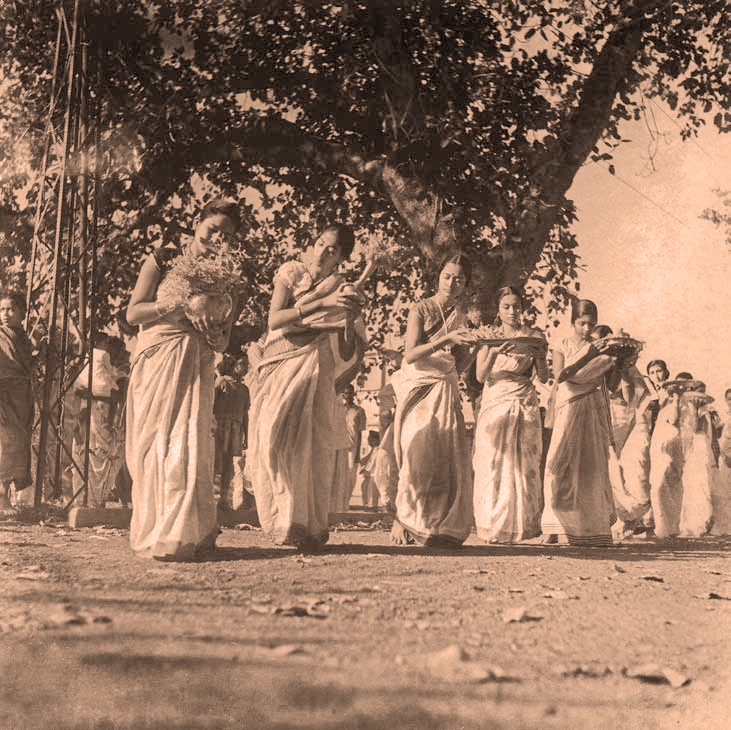
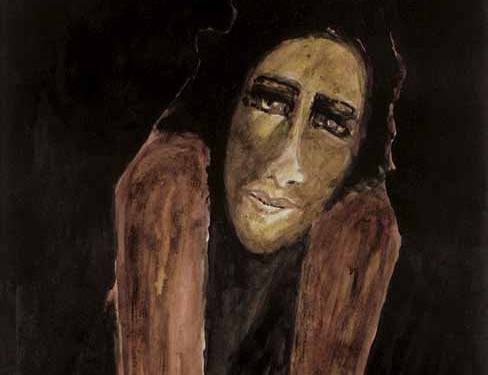
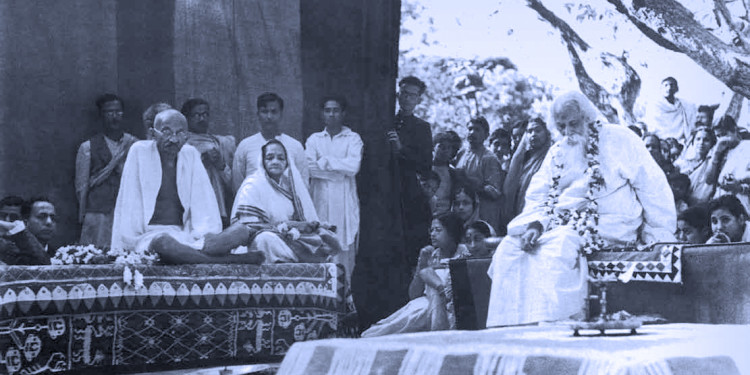
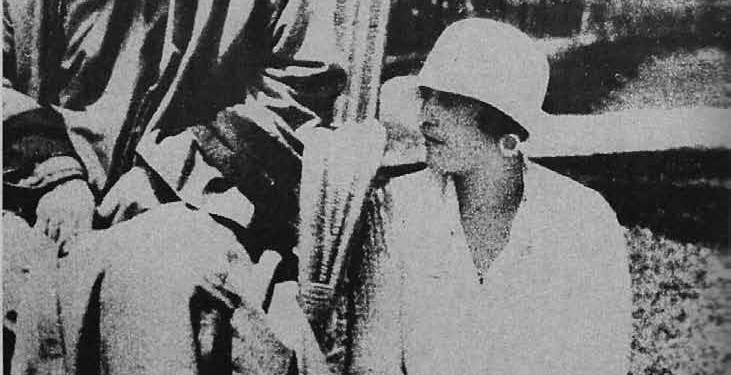
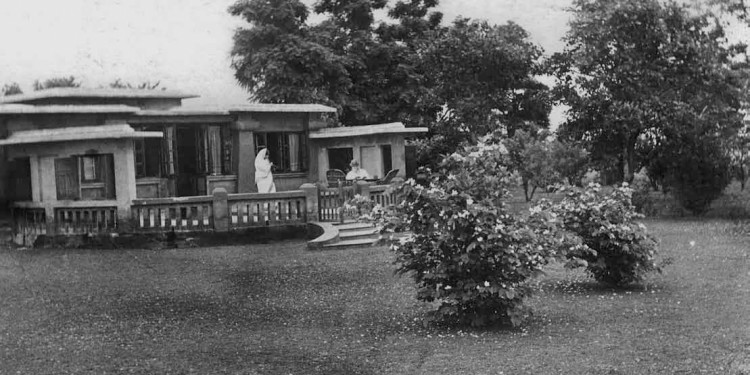
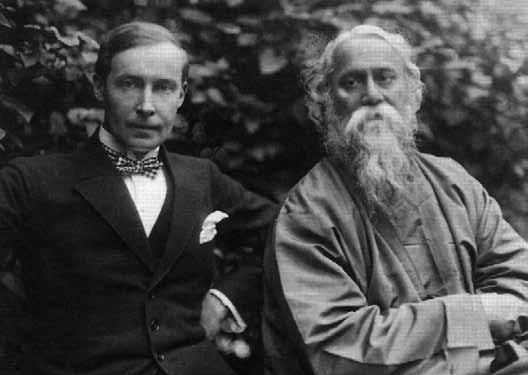
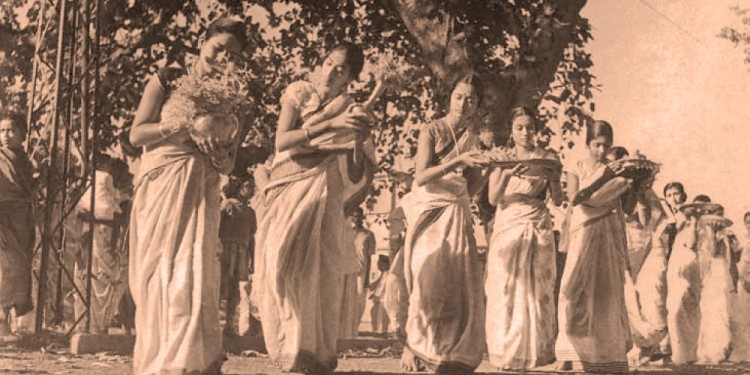
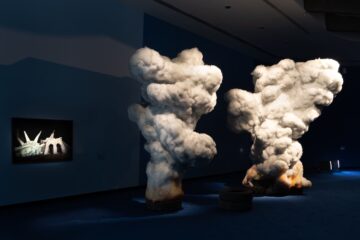


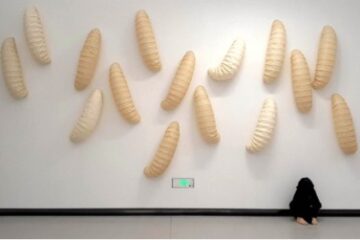

No Comment